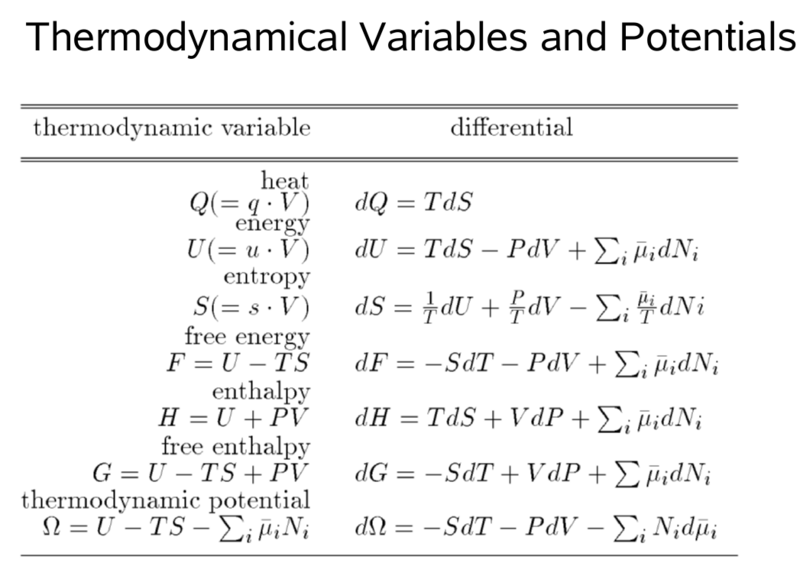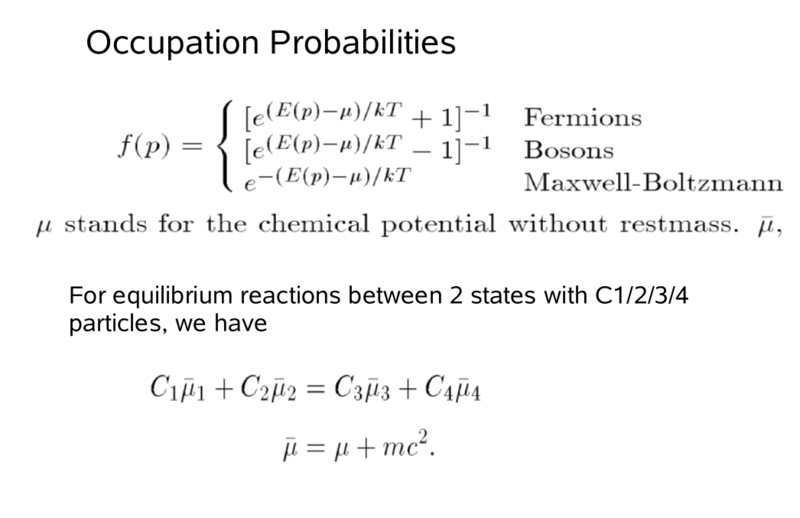2nd Week: Properties of Astrophysical Plasmas C
Thermodynamic Quantities
Important thermodynamic quantities for a volume can be found by integrating over the product of the density of state function and the occupation probability of each state for all momenta. So for example, the number density is:
and the energy density is:
and pressure is:
So for example, to find for a particle in a box, we can start with the well known solution for such a particles energy levels:
Then we want the number of states that lead to a particle having an energy of E or less. Take the three n quantum numbers as a vectors within a sphere with radius, then for large energies the number of possible values that these n's can take to give that energy or less is just the area of the sphere . Of course, we don't know what to do with negative values of n, so we'll just take the 1/8th of the sphere for which all values are positive. This gives us, for number of states:
And our density of states is just the number per, dE, so taking the derivative with respect to E:
Determination of Solar Abundances
The knowing the abundance of elements in the presolar nebula is important because it gives us a perspective on the physical conditions of our section of the universe as our solar system was forming. These abundances can be determined in three ways:
1) Examination of material on Earth
This process is flawed by the chemical fractionation that occurred over the lifetime of the earth. However, studying the abundances of isotopes on Earth is beneficial, since isotopes react in a way that is chemically similar to other isotopes of the same elememt. The isotope fraction of elements on Earth is therefore largely unchanged since the Earth's formation.
2) Examination of Solar spectra This process provides a fairly clear look at the composition of the presolar environment, since the outer layers of the sun have not changed much since the Sun's birth. However, there are some complications encountered in this process, such as the need to take pressure broadening (an element's increased line profile due to collisions with other particles), Doppler broadening (an element line's profile due to thermal velocities of the particles), and ionization effects.
3) Examination of Meteorites Certain types of meteorites provide clues as to what the presolar nebular compostion was like. These meteorites are composed of many small bits, called chondrules, which are believed to have formed very early in our solar system's history. The chondrules accumulate together into larger meteorites (of which type constitute about 6 per cent of all meteorites falling to Earth) without undergoing much heat or pressure. Therefore these carbonaceous chondrites undergo little chemical fractionation and are good indicators of the presolar nebula composition.











